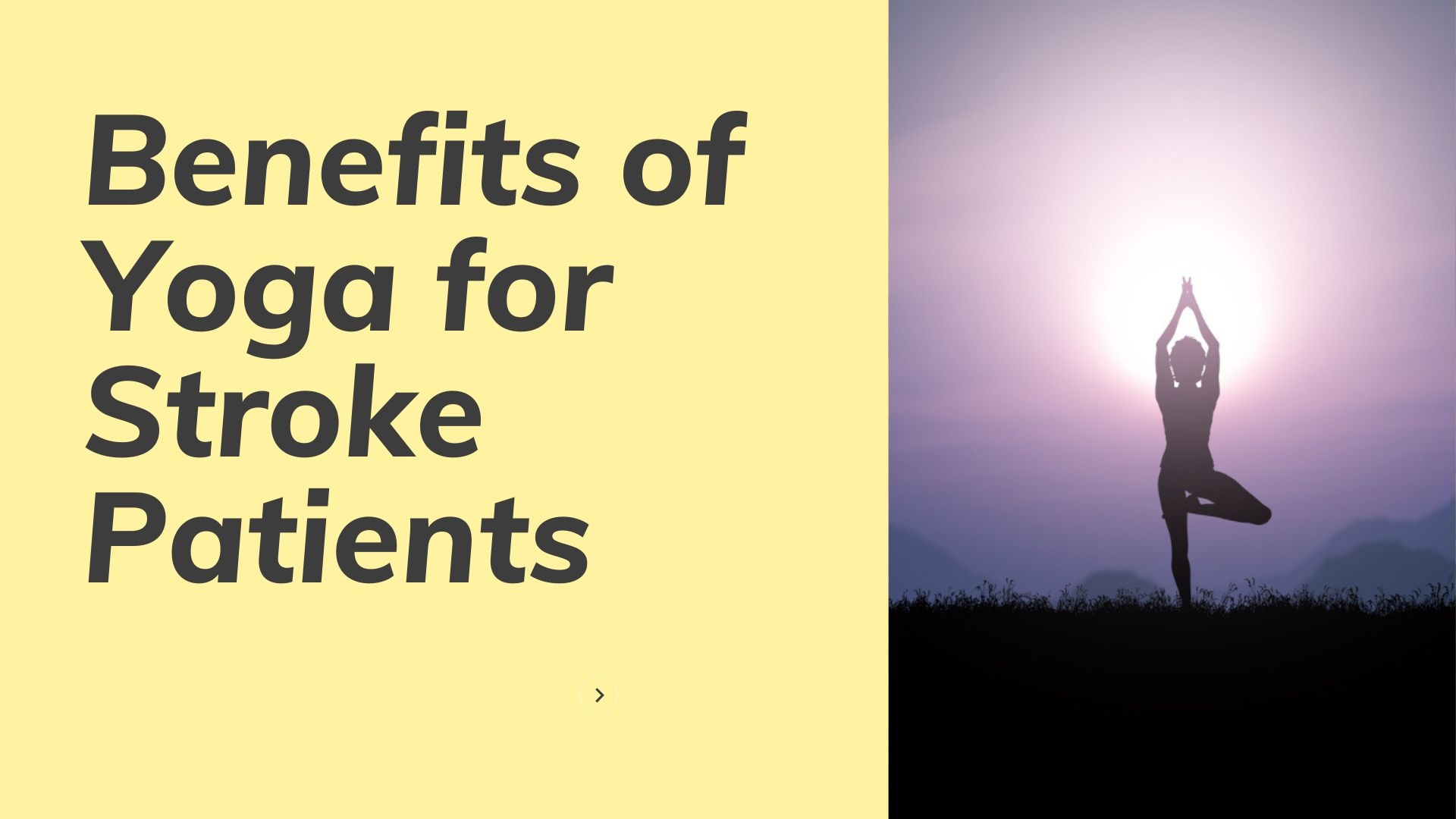Yoga is a unique physical activity that functions to help combine the physical body and soul of a person into a harmonious whole, which helps with the overall health of the person. This is the primary reason why this ancient practise, introduced by Indian yogis, has been incorporated into the rehabilitation of stroke patients as well as many other diseases. Yoga for stroke patients aids in the recovery process, reduces the likelihood of severe disability, and improves the patient's health.
This blog focuses on bringing out the benefits of yoga for stroke patients when it is incorporated into their recovery regime.
Yoga is not just for bendy people, and the common misconception that you have to be extremely flexible to perform yoga is what deters so many people from attempting it. Yoga is a good combination of good breathing techniques, meditation, poses, and observation. The mind and body connection developed through yoga is the core reason stroke rehabilitation gets much better through yoga, as it helps rewire the entire systems and processes.
The yoga poses are not difficult and are simple, but to perfect the right pose, it takes a lot of practise, which comes with time. Now, let us look into the different benefits that are possible by making yoga part of your stroke recovery regime.
Benefits of Yoga for Stroke Patients
Yoga is recommended for stroke patients to get relief from their conditions. Here are some of the benefits of yoga for stroke patients:
Yoga helps with better cognitive function
Yoga requires high concentration while performing it and transitioning from one pose to another. It is an effective therapeutic technique that needs undivided attention. When yoga is performed, the patient focuses on converting the energy into processing power, which reduces the cognitive load on the brain. As each pose in yoga requires precision, the simulation that it causes will help the brain be active in its best form. Such slight and large simulations are very important for a stroke patient and will help the patient return to their normal life.
Helps advance the range of motion, strength, and endurance
Each pose in yoga is dedicated to strengthening an individual part of the body. A single yoga pose can also focus on multiple areas of the body. A yoga pose that is similar to low plank can help focus on the strength of the shoulders and the core of the body. A downward dog position can focus on the strengthening of arms and leg muscles. It can also help in balancing and stretching the whole body, which can bring about balance and a better scope of recovery.
Helps improve the lower mobility
The stiffness of joints and the imbalance of the body are two of the main issues faced by people who have had strokes. Getting the body back to its full mobility is the main goal or objective of stroke patients. Yoga is the ideal form of exercise, and it should not be taken into consideration that patients with restricted lower mobility will not be able to do it. Yoga is a physical activity that will take a good amount of time to perfect. And over time, the body will be much more flexible, which helps in initiating movement and better stroke recovery.
Modifications are possible in yoga
The ability to imbibe yoga poses can be quite hard to nurture initially. The health condition and age of the stroke patient play a vital role in how well they can put their body into doing each of the yoga poses. The yoga instructor will first analyse the patient's capabilities and fix them a yoga schedule that they can easily adapt. The instructor may also advise beginning with meditation and breathing techniques and gradually progressing to yoga poses. Once they become fit, the yoga poses can be done with props like chairs and flexible bands to perfect them in the long run.
Yoga helps manage stress and anxiety
Stroke does not just come with physical impairment; it also comes along with mental stress and depression. It can rattle one's self confidence and hamper the willpower of the patient. As yoga is a connection between the mind and the body, making it part of the rehabilitation programme can calm the nervous system and make the recovery process easier. When the brain movements are focused, they help improve the chances of a better recovery and a return to normal life.
These are the advantages of incorporating a daily yoga programme. Before introducing yoga to stroke patients, it is best to consult with a practitioner to determine the level of intensity that should be used. Before engaging the stroke patients in yoga, make sure to ideally consult the practitioner and decide on the level of intensity with which it has to be incorporated. The range of activities and poses also needs to be discussed with both the practitioner and the yoga instructor to make sure that it works well.
Ayur Bethaniya has been striking through multiple avenues in ayurvedic treatment for stroke to produce the most efficient results for stroke patients. The efficiently crafted yoga poses are divided into different levels, which can be adapted according to the condition of the patient. We believe in providing the best treatment procedures to our clients to promote the best recovery possible.
You may also like to read, How Ayurvedic Treatment is Helpful to Control High Cholesterol?
Conclusion
Strokes are quite a discerning health issue that one can face in life. It is not only compromises physical health but also takes a toll on mental health. Here’s how yoga can help ensure the best possible recovery for stroke patients.
You may also like to read, Yoga Asanas to Lose Belly Fat
